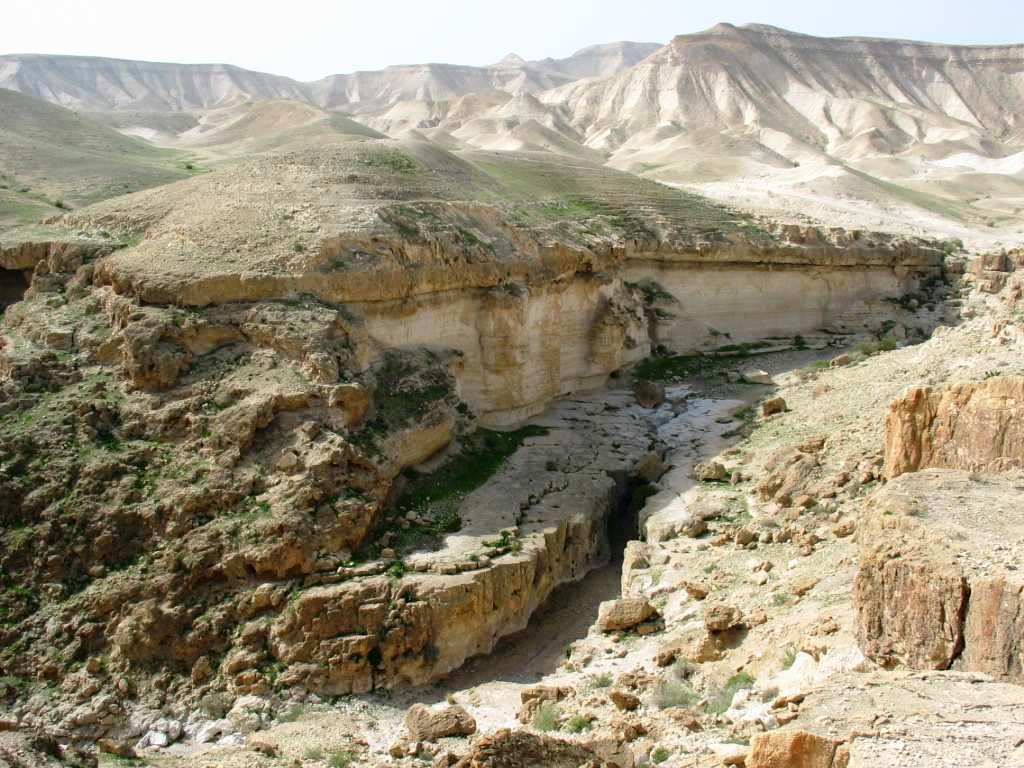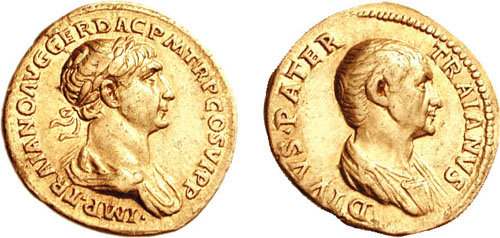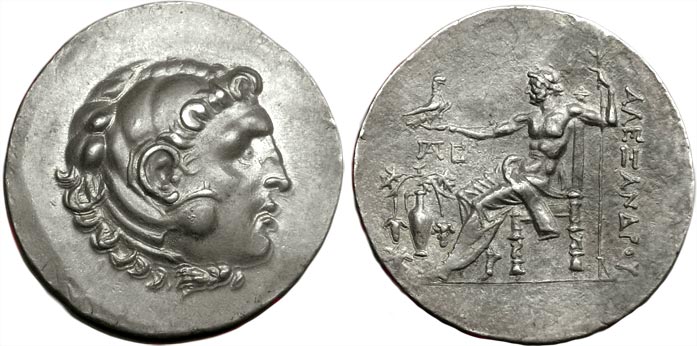|
Murabbaat
Wadi Murabba'at, also known as Nahal Darga, is a ravine in the West Bank, cut by a seasonal stream which runs from the Judean Desert east of Bethlehem past the Herodium down to the Dead Sea 18 km south of Khirbet Qumran. It was here that Jewish fighters hid out in caves during the Bar Kochba revolt, leaving behind documents that include some letters signed by Simon Bar Kochba. Discovery and analysis of the caves When the Ta'amireh Bedouin tribe that discovered the first cave at Qumran learned how valuable the texts they found were, they began to search for other sites that might contain more scrolls. This led in the autumn of 1951 to the discovery of caves high up in the near vertical rock face of Wadi Murabba'at. With the confirmation that the new texts had come from Murabba'at, Gerald Lankester Harding and Roland de Vaux commenced official excavations there in January 1952. Four caves were examined. The remains discovered there reflected habitation, usually temporary, d ... [...More Info...] [...Related Items...] OR: [Wikipedia] [Google] [Baidu] |
Bronze Age
The Bronze Age () was a historical period characterised principally by the use of bronze tools and the development of complex urban societies, as well as the adoption of writing in some areas. The Bronze Age is the middle principal period of the three-age system, following the Stone Age and preceding the Iron Age. Conceived as a global era, the Bronze Age follows the Neolithic, with a transition period between the two known as the Chalcolithic. The final decades of the Bronze Age in the Mediterranean basin are often characterised as a period of widespread societal collapse known as the Late Bronze Age collapse (), although its severity and scope are debated among scholars. An ancient civilisation is deemed to be part of the Bronze Age if it either produced bronze by smelting its own copper and alloying it with tin, arsenic, or other metals, or traded other items for bronze from producing areas elsewhere. Bronze Age cultures were the first to History of writing, develop writin ... [...More Info...] [...Related Items...] OR: [Wikipedia] [Google] [Baidu] |
Qumran
Qumran (; ; ') is an archaeological site in the West Bank managed by Israel's Qumran National Park. It is located on a dry marl plateau about from the northwestern shore of the Dead Sea, about south of the historic city of Jericho, and adjacent to the modern Israeli settlement and kibbutz of Kalya. The Hellenistic civilization, Hellenistic period settlement was constructed during the reign of Hasmonean dynasty, Hasmonean leader John Hyrcanus () or somewhat later. Qumran was inhabited by a Jewish religious movements#Sects in the Second Temple period, Jewish sect of the late Second Temple period, which most scholars identify with the Essenes; however, other Jewish groups were also suggested. It was occupied most of the time until and was destroyed by the Roman Empire, Romans during the First Jewish–Roman War, possibly as late as 73 CE. It was later used by Jewish rebels during the Bar Kokhba revolt. Today, the Qumran site is best known as the settlement nearest to the Qumran ... [...More Info...] [...Related Items...] OR: [Wikipedia] [Google] [Baidu] |
Pessah Bar-Adon
Pessah Bar-Adon (; b. 1907, d. 1985) was a Polish-born Israeli archaeologist and writer. Early life Born Pessah Panitsch in Kolno, Poland, to a Zionist, Haredi family, he was educated in a Jewish orthodox school and in yeshivas. He immigrated to Israel in 1925. While working in housing and road construction to support himself, he studied for a degree in Middle Eastern studies at the Hebrew University of Jerusalem. Career For a period, he lived amongst Bedouins near Amman, Bet She'an, and Kuneitra in order to learn their lifestyle. Part of his motivation for this endeavor was to understand why many of the ancient Kings of Israel were originally shepherds. During this period he wore traditional Bedouin clothing and went by the name Aziz Effendi. During the 1929 Palestine riots and the 1936–1939 Arab revolt in Palestine, he was an active member of the Haganah Jerusalem. Later he also took part in the Aliyah Bet. In 1932 he participated in one of the first movies made about the ... [...More Info...] [...Related Items...] OR: [Wikipedia] [Google] [Baidu] |
Antioch
Antioch on the Orontes (; , ) "Antioch on Daphne"; or "Antioch the Great"; ; ; ; ; ; ; . was a Hellenistic Greek city founded by Seleucus I Nicator in 300 BC. One of the most important Greek cities of the Hellenistic period, it served as the capital of the Seleucid Empire and later as regional capital to both the Roman and Byzantine Empire. During the Crusades, Antioch served as the capital of the Principality of Antioch, one of four Crusader states that were founded in the Levant. Its inhabitants were known as ''Antiochenes''. The remains of the ancient city of Antioch are mostly buried beneath alluvial deposits from the Orontes River. The modern city of Antakya, in Hatay Province of Turkey, lies in its place. Antioch was founded near the end of the fourth century BC by Seleucus I Nicator, one of Alexander the Great's generals, as one of the tetrapoleis of Seleucis of Syria. Seleucus encouraged Greeks from all over the Mediterranean to settle in the city. The ci ... [...More Info...] [...Related Items...] OR: [Wikipedia] [Google] [Baidu] |
Trajan
Trajan ( ; born Marcus Ulpius Traianus, 18 September 53) was a Roman emperor from AD 98 to 117, remembered as the second of the Five Good Emperors of the Nerva–Antonine dynasty. He was a philanthropic ruler and a successful soldier-emperor who presided over one of the greatest military expansions in Roman history, during which, by the time of his death, the Roman Empire reached its maximum territorial extent. He was given the title of ('the best') by the Roman Senate. Trajan was born in the of Italica in the present-day Andalusian province of province of Seville, Seville in southern Spain, an Italic peoples, Italic settlement in Hispania Baetica; his came from the town of Todi, Tuder in the Regio VI Umbria, Umbria region of central Italy. His namesake father, Marcus Ulpius Traianus (father of Trajan), Marcus Ulpius Traianus, was a general and distinguished senator. Trajan rose to prominence during the reign of Domitian; in AD 89, serving as a in , he supported t ... [...More Info...] [...Related Items...] OR: [Wikipedia] [Google] [Baidu] |
Tetradrachm
The tetradrachm () was a large silver coin that originated in Ancient Greece. It was nominally equivalent to four drachmae. Over time the tetradrachm effectively became the standard coin of the Antiquity, spreading well beyond the borders of the Greek World. As a result, tetradrachms were minted in vast quantities by various polities in many weight and fineness standards, though the Athens-derived ''Attic standard'' of about 17.2 grams was the most common. Because of their large size, tetradrachms were often used by various states or rulers to advertise themselves or to deliver political messages. Popularity of the tetradrachm outlived the political independence of the Greeks and it remained in wide circulation in the Mediterranean up until Crisis of the Third Century, while debased varieties persisted in India and Central Asia into early Middle Ages. Due to their often high artistic level tetradrachms are eagerly collected in modern times, and well-preserved or rare specimen ... [...More Info...] [...Related Items...] OR: [Wikipedia] [Google] [Baidu] |
Dinar
The dinar () is the name of the principal currency unit in several countries near the Mediterranean Sea, with a more widespread historical use. The English word "dinar" is the transliteration of the Arabic دينار (''dīnār''), which was borrowed via the Syriac language, Syriac ''dīnarā'' from the Latin language , Latin Denarius , ''dēnārius''. The modern gold dinar is a projected bullion gold coin, and is not issued as an official currency by any state. History The modern dinar's historical antecedents are the gold dinar and the silver dirham, the main coin of the medieval Islamic empires, first issued in Islamic calendar, AH 77 (696–697 AD) (Late Antiquity) by Caliph Abd al-Malik ibn Marwan. The word "dinar" derives from the Latin word "denarius, ''dēnārius''," a silver coin of Ancient Roman coinage, ancient Rome, which was first minted about c. 211 BC. The Kushan Empire introduced a gold coin known as the ''dīnāra'' in India in the 1st century ... [...More Info...] [...Related Items...] OR: [Wikipedia] [Google] [Baidu] |
Ancient Drachma
In ancient Greece, the drachma (, ; Grammatical number, pl. drachmae or drachmas) was an ancient currency unit issued by many city-states during a period of ten centuries, from the Archaic Greece, Archaic period throughout the Classical Greece, Classical period, the Hellenistic period up to the Roman period. The ancient drachma originated in Greece around the 6th century BC. The coin, usually made of silver or sometimes gold had its origins in a bartering system that referred to a drachma as a handful of wooden spits or arrows. The drachma was unique to each city state that minted them, and were sometimes circulated all over the Mediterranean. The coinage of Classical Athens, Athens was considered to be the strongest and became the most popular. Origins The name ''drachma'' is derived from the verb (, "(I) grasp"). It is believed that the same word with the meaning of "handful" or "handle" is found in Linear B tablets of the Mycenaean Greece, Mycenean Pylos. Initially a dra ... [...More Info...] [...Related Items...] OR: [Wikipedia] [Google] [Baidu] |
Nabataea
The Nabataean Kingdom (Nabataean Aramaic: 𐢕𐢃𐢋𐢈 ''Nabāṭū''), also named Nabatea () was a political state of the Nabataeans during classical antiquity. The Nabataean Kingdom controlled many of the trade routes of the region, amassing large wealth and drawing the envy of its neighbors. It stretched south along the Tihamah into the Hejaz, up as far north as Damascus, which it controlled for a short period (85–71 BC). Nabataea remained an independent political entity from the mid-3rd century BC until it was annexed in AD 106 by the Roman Empire, which renamed it to Arabia Petraea. History Nabataeans The Nabataeans were one among several formerly nomadic Arab tribes that roamed (later settled) the Arabian Desert and moved with their herds to wherever they could find pasture and water. They became familiar with their area as seasons passed, and they struggled to survive during bad years when seasonal rainfall diminished. The origin of the specific tribe of Arab nomads ... [...More Info...] [...Related Items...] OR: [Wikipedia] [Google] [Baidu] |
Spindle (textiles)
A spindle is a straight spike, usually made from wood, used for spinning, twisting fibers such as wool, flax, hemp, and cotton into yarn. It is often weighted at either the bottom, middle, or top, commonly by a disc or spherical object called a whorl; many spindles, however, are weighted simply by thickening their shape towards the bottom, e.g. Orenburg and French spindles. The spindle may also have a hook, groove, or notch at the top to guide the yarn. Spindles come in many different sizes and weights depending on the thickness of the yarn one desires to spin. History The origin of the first wooden spindle is lost to history because the materials did not survive. Whorl-weighted spindles date back at least to Neolithic times; spindle whorls have been found in archaeological digs around the world. Possible remains of spindle whorls were found in a Natufian village at Nahal Ein Gev II archeological site, Israel, from 12000 years ago. A spindle is also part of traditional ... [...More Info...] [...Related Items...] OR: [Wikipedia] [Google] [Baidu] |
Pilum
The ''pilum'' (; : ''pila'') was a javelin commonly used by the Roman army in ancient times. It was generally about long overall, consisting of an iron shank about in diameter and long with a pyramidal head, attached to a wooden shaft by either a socket or a flat tang. History The ''pilum ''may have originated from an Italic tribe known as the Samnites. It also may have been influenced by Celtiberian and Etruscan weapons. The ''pilum'' may have derived from a Celtiberian weapon known as the'' falarica''. Archaeological excavations have disclosed ''pila'' in tombs at the Etruscan city of Tarquinia. The oldest finds of pila are from the Etruscan settlements of Vulci and Talamone. The first identified written reference to the ''pilum'' comes from ''The Histories'' of Polybius. According to Polybius, more heavily armed Roman military soldiers used a spear called the ''hyssoí''. This may have been the ''pilum''. The precursor to the ''pilum'' was the '' hasta''. It is u ... [...More Info...] [...Related Items...] OR: [Wikipedia] [Google] [Baidu] |









